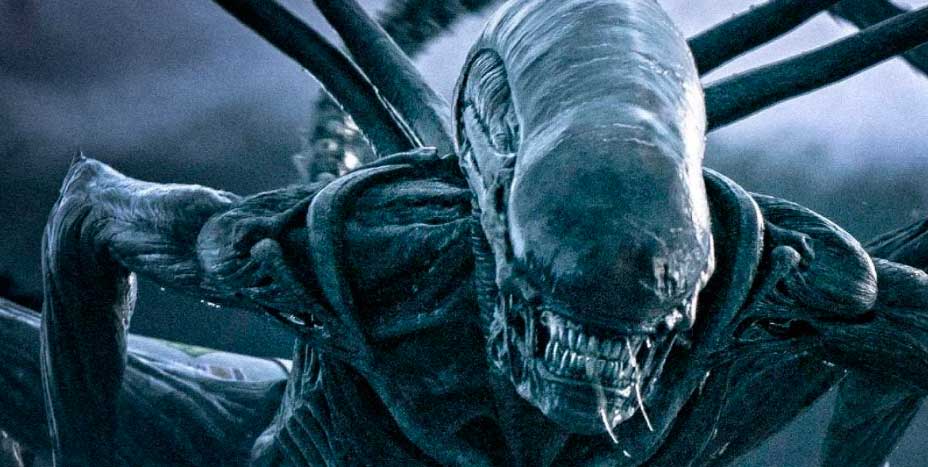
When discussing the powerful female figures in horror films, we often think of the “final girl” – the brave young woman who survives the murderous rampage of a masked killer, eventually finding the strength to defeat her aggressor. Iconic characters like Jamie Lee Curtis as Laurie Strode in Halloween, Heather Langenkamp as Nancy Thompson in A Nightmare on Elm Street, and Neve Campbell’s Sidney Prescott in The Scream films come to mind. However, there is a female horror hero whose badassery surpasses any final girl’s. Her name is Ellen Ripley, and the talented Sigourney Weaver portrays her in the Alien franchise.
Ellen Ripley embodies the epitome of late 70s and 1980s cinematic cool. A good-hearted person, she fearlessly takes on evil extraterrestrial creatures from outer space, obliterating everything in her path. While Ellen Ripley is celebrated today as one of the greatest heroes in film, her iconic status almost didn’t come to be. In the early stages of Alien’s development, director Ridley Scott contemplated killing her off in a shocking twist finale.
Released in 1979, just a year after John Carpenter’s Halloween, Alien shares similarities with the slasher classic. Although they differ in various aspects, Alien can be seen as Halloween in space, with a mysterious figure lurking in the shadows, systematically eliminating Ellen Ripley’s companions until she stands alone. While Alien lacks the slasher film’s familiar tropes of sex and drinking, it creates vulnerability when the alien strikes at the moment Ripley is stripped down to her underwear.
Alien revolutionized the movie industry. Before its release, extraterrestrial creature films existed, but none portrayed creatures as realistic and terrifying as those designed by H.R. Giger for Alien. The movie’s claustrophobic setting, confined mainly to the Nostromo spaceship, heightens the suspense, and the monstrous alien is truly nightmarish. Nevertheless, this would have been futile without compelling characters to invest emotionally.
The film boasts an exceptional ensemble cast, including Tom Skerritt, John Hurt, and Ian Holm, but it was 28-year-old Sigourney Weaver who stole the show. Alien served as her breakthrough role, as she had previously played smaller parts, including a minor role in Annie Hall. The audience’s lack of familiarity with Weaver worked in her favor, making Ellen Ripley feel relatable and authentic. Weaver’s portrayal allowed us to see a protagonist – a hero – who just happened to be a woman. Ellen Ripley was the epitome of cool, not because she was a character who excelled in combat “for a girl,” but because she excelled in combat.
Sigourney Weaver’s portrayal of Ellen Ripley shattered stereotypes and paved the way for the film’s more potent, independent female characters. Her legacy endures, inspiring future generations of filmmakers and actors alike. As we celebrate the powerful female horror icons, let us not forget the awe-inspiring Ellen Ripley, the flamethrower-wielding warrior who remains an eternal symbol of courage and resilience in the face of the unknown.
The Studio’s Crucial Decision: Saving Ellen Ripley in ‘Alien’
Ellen Ripley, the alien-ass-kicking warrior from the first Alien movie, rarely achieved her status as a cinematic icon. In the original film’s climax, Ripley survives alongside the ship’s cat, Jones, setting the Nostromo to explode and escaping in a miniature shuttle. Just as she prepares for hypersleep on her journey back to Earth, she discovers that the deadly creature has sneaked onboard her vessel. A battle ensues, and Ripley defeats the alien, securing her survival. However, director Ridley Scott originally had a different ending in mind that would have cost Ripley her life before any sequels could be envisioned.
Film companies often clash with directors over creative decisions, but the studio’s intervention proved crucial in this case. Killing off Ripley at the end of Alien would have shifted the entire narrative focus onto the monster, rendering the hero’s struggles meaningless. The absence of a satisfying resolution would have left audiences with a bleak and disappointing experience. It is akin to envisioning Laurie Strode from Halloween being brutally murdered by Michael Myers after enduring so much – it would diminish the story’s impact.
The studio’s decision to keep Ripley alive gained even more significance with the creation of the sequel, Aliens, directed by James Cameron in 1986. This action-packed film elevated Ripley’s character from a horror icon to an action hero. Armed with her flamethrower and delivering classic lines like “Get away from her, you bitch!” Sigourney Weaver’s Ripley emerged as an action star on par with Arnold Schwarzenegger and Sylvester Stallone. Her character became a powerful cinematic role model for women, breaking away from traditional depictions of women as helpless or mere sex symbols.
While sequels to Alien could have been crafted with a different character, Ripley’s presence captivated audiences. Even in films like Alien 3 and Alien: Resurrection, which may have had flaws, Weaver’s portrayal of Ripley retained the audience’s interest. Her continuation as the heroic protagonist preserved the legacy of the franchise. The film companies’ decision to keep Ripley alive turned out to be a pivotal twist, saving the character and shaping cinematic history.


